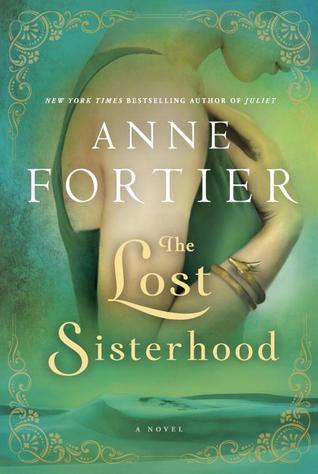The Lost Sisterhood: A Novel
- By Anne Fortier
- Ballantine Books
- 608 pp.
- Reviewed by Virginia Pasley
- April 9, 2014
Parallel journeys by an Oxford lecturer and a North African priestess separated by time lead to the “real” story of the Amazons.

Students of ancient history, Greek mythology, and archeology who are in need of a book for their beach vacation this summer — especially if it’s a long vacation — should rejoice that a novel exactly suited for them is available. The thick tome comes from bestselling author Anne Fortier, whose previous novel was a reimagining of the story of Romeo and Juliet. In her latest book, The Lost Sisterhood, Fortier takes a “Shakespeare in Love” approach to the story of the Amazons by wrapping bits of original mythology in larger arcs of adventure and intrigue. The story is told through the eyes of two heroines: plucky philologist Diana Morgan and North African priestess Myrina.
If the reader is unfamiliar with the specifics of Amazonian mythology, as I was, The Lost Sisterhood is something of an extended crash course. Fortier grounds her heroines’ journeys with constant references and callbacks to different Amazon myths — from their alleged settlement on the Black Sea to when they picked sides in the Trojan War (they were on the Trojans’ side, apparently). Through Myrina, readers meet Paris, Aeneas, and Helena, hear tales about a nasty pirate named Achilles, and begin to understand how the “real” story of the Amazons was passed down to become the account known today.
Fortier alternates between the story of Myrina, a skilled hunter, and Lilli, her clairvoyant younger sister, and in the other strand, the story of Diana, who has a Ph.D. from Oxford and is lured from her comfortable one-year lectureship to join a group of mysterious and probably shady antique hunters on a dig in Algeria. The antique hunters promise Diana that the search relates to the Amazons, her academic specialty. Diana’s own search slowly elucidates the connection between Myrina’s travels between various ancient hotspots — including Mycenae and Ephesus — and the Amazonian myths.
As I said, the book is long — topping 600 pages — and the interweaving plots are chock full of twists and turns. Because of its magnitude, readers may find themselves forgetting previously mentioned events; one of the biggest revelations toward the end concerns an earlier event that I had forgotten even happened. Fortier, however, not only keeps track of all the events but also skillfully manages dozens of cliffhangers and twists—usually deploying them right before switching from one heroine’s story to another.
Like a good Jane Austen book, the plot of The Lost Sisterhood is a little slow at first and only really picks up when the men arrive. Heroines Myrina and Diana are a little broadly sketched; they are brave, stubborn, and frequently indignant, but like most lead characters in adventure stories, they are primarily meant to serve as a proxy for the reader. They take initiative from time to time, but the plot largely happens to them. Fortier, however, makes the male leads more mysterious and interesting and even gives them a sense of humor.
The plot really accelerates when readers start questioning the men’s motives and allegiances. Two men — aristocratic James, whose family has collected antiquities for centuries, and gruff Nick, who seems awfully familiar with the black market for antiques but less versed in their actual history — pull Diana in different directions. Of course, Diana initially trusts the former but finds that appearances may be deceiving. Myrina vacillates not between two men but between a man and sisterhood. As a priestess, she is meant to follow the “Moon Goddess” and eschew men’s company, but after meeting Paris (who is much nicer in Fortier’s telling than in Homer’s), she begins to have doubts.
The plot twists mostly make up for the sometimes stilted dialogue. Myrina and her cohorts use the awkward language constructions authors often use to designate another time or a foreign language (in this case, both): low on contractions and high on formality. Meanwhile, Diana at one point refers to a “particularly malicious” professor whose idea of a joke is “a fantasy in which [she] was stolen away from Oxford to star in a girl-power TV series.” Malicious, maybe, but funny, not so much. The book also contains dozens of jokes about how dangerous it is for men to see Diana naked — as in the goddess Diana, get it?
Jokes about ancient Greece aside, the reader eventually gets pulled into the story: What will happen between Myrina and Paris? Will Paris have better luck than he did in The Iliad? Will Diana find proof that the Amazons existed and figure out which man is for her? Fortier juggles it all and never disappoints her readers with a loose end, even if they’ve forgotten many of the details by the time she ties it up.
Virginia Pasley is a journalist currently working as the associate director of communications at the National Association of Federal Credit Unions in Arlington, VA.

